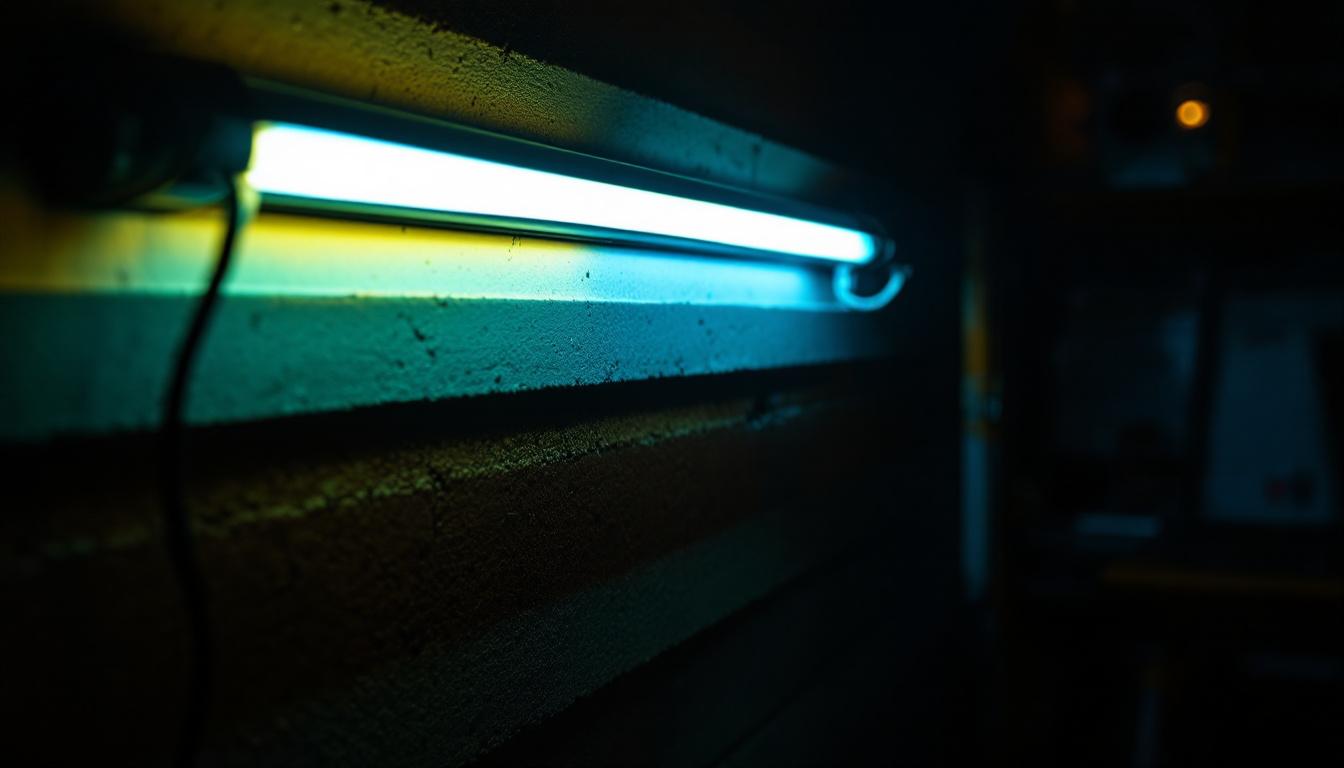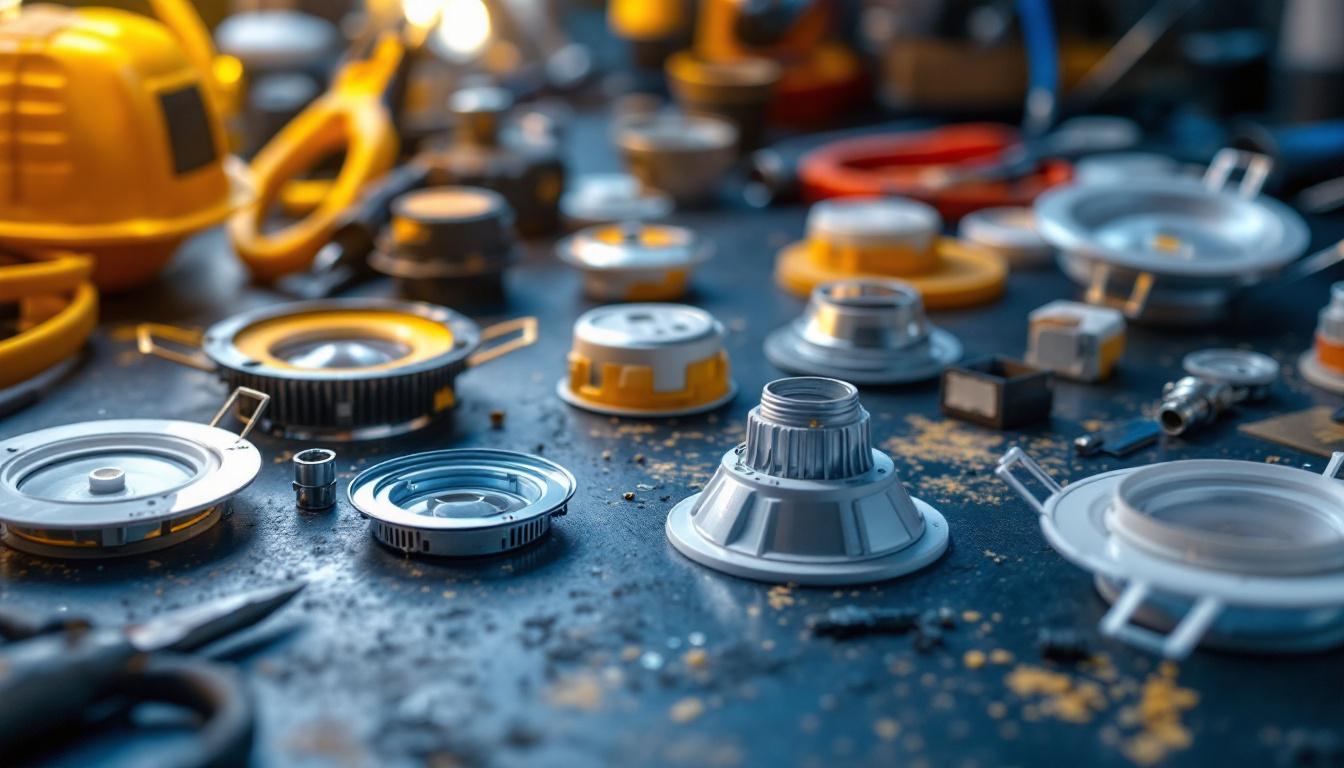
Fluorescent tube flickering is more than just a minor annoyance; it can signal underlying electrical or mechanical issues that impact both lighting performance and energy efficiency. For lighting contractors, recognizing the root causes of flicker is essential—not only to ensure client satisfaction but also to maintain safety and prolong fixture lifespan.
Flickering occurs when the light output fluctuates rapidly, often noticeable as a pulsing or intermittent glow. This can lead to eye strain, headaches, and a perception of poor quality lighting. Identifying why a fluorescent tube flickers involves examining several components within the lighting system.
One common cause of flickering is the age of the fluorescent tube itself. Over time, the phosphor coating inside the tube can degrade, leading to inconsistent light output. Additionally, the ballast, which regulates the current to the fluorescent lamp, can also be a culprit. If the ballast is failing or incompatible with the type of fluorescent tube being used, it can cause the light to flicker. Regular maintenance and timely replacement of these components can significantly improve lighting performance and reduce flickering issues.
Moreover, environmental factors can contribute to flickering as well. For instance, fluctuations in voltage from the electrical supply can cause lights to flicker, especially in older buildings where wiring may be outdated or inadequate. This issue can often be exacerbated by the use of dimmer switches that are not designed for fluorescent lighting. Understanding these factors is crucial for lighting professionals, as they can provide valuable insights into the overall health of the lighting system and help in diagnosing problems effectively.
“`html
Traditional fluorescent fixtures often rely on starters to ignite the gas inside the tube. Starters are small, inexpensive components but critical for proper operation. Over time, starters can wear out or malfunction, causing the tube to flicker as the electrical circuit struggles to maintain a steady arc.
When a starter fails, the tube may flash on and off repeatedly before stabilizing or may never fully light. Replacing the starter is usually a straightforward fix, but it’s important to verify compatibility with the fixture and tube type. Additionally, some modern fixtures utilize electronic starters that can enhance performance and longevity, reducing the frequency of replacements and flickering issues.
Ballasts regulate the current to fluorescent tubes. Older magnetic ballasts are especially prone to issues that cause flickering, such as coil degradation, overheating, or internal component failure. Flicker caused by ballast problems can be irregular or continuous, depending on the severity.
Electronic ballasts, which have largely replaced magnetic types, offer more stable current control and reduce flicker significantly. However, even electronic ballasts can fail due to voltage spikes or age, so testing and replacement are key steps when diagnosing flicker. It’s also worth noting that upgrading to high-efficiency electronic ballasts can improve energy savings and enhance the overall performance of the lighting system, providing a more consistent illumination experience.
Electrical connections within the fixture or wiring can loosen over time due to vibration, thermal expansion, or poor installation. Corrosion, especially in damp environments, exacerbates this issue. Loose contacts cause intermittent current flow, leading to flicker.
Lighting contractors should inspect sockets, wiring terminals, and connectors carefully. Tightening connections and cleaning corrosion can often restore stable lighting without replacing major components. Furthermore, using corrosion-resistant materials in fixtures can help mitigate future issues, ensuring a longer lifespan for the connections and reducing maintenance frequency.
Flicker can also originate from the power supply side. Voltage drops or fluctuations in the building’s electrical system affect the current delivered to fluorescent tubes. This is common in older buildings with outdated wiring or in facilities with heavy electrical loads cycling on and off.
Using a voltage meter to monitor supply stability helps identify if flicker is caused by external electrical factors. In some cases, installing dedicated circuits or voltage regulators may be necessary to stabilize lighting performance. Additionally, educating building occupants about the impact of heavy machinery on electrical systems can help them understand the importance of managing power loads effectively to minimize flickering issues.
Fluorescent tubes have a finite lifespan, typically measured in thousands of hours. As they near end-of-life, the gas inside the tube depletes or the phosphor coating degrades, causing inconsistent light emission and flicker.
Replacing old tubes with new ones is often the simplest solution. Lighting contractors should advise clients on regular maintenance schedules to prevent flicker-related complaints and maintain optimal lighting quality. Moreover, considering the transition to LED lighting can be beneficial, as LEDs not only last longer but also provide instant illumination without flicker, offering a modern solution to traditional fluorescent issues.
“`
Effective diagnosis requires a systematic approach. Start by gathering detailed information from the client about when and how the flicker occurs. Is it constant or intermittent? Does it happen at startup or after running for a while? Are multiple fixtures affected or just one? Understanding the context in which the flicker occurs can provide valuable clues, such as whether it correlates with specific electrical loads or appliances being used in the vicinity. This initial conversation can also help identify if the flicker is a recent development or a long-standing issue, which may influence the troubleshooting process.
Next, perform a visual and physical inspection of the fixture. Look for signs of wear, discoloration, or damage. Check the starter and ballast condition, and test electrical connections for tightness and corrosion. Use a multimeter to measure voltage stability and current flow. It’s also beneficial to examine the surrounding environment; for instance, fluctuations in power supply from the grid can lead to flickering lights. Additionally, consider the age of the lighting system, as older fixtures may be more prone to issues due to outdated technology or components that have reached the end of their lifespan.
When possible, swap components such as starters or tubes with known good parts to isolate the issue. This hands-on method often quickly reveals the faulty element causing flicker. If the flicker persists even after replacing components, it may be necessary to delve deeper into the wiring and circuit configuration. Inspecting the circuit for loose connections, damaged wires, or overloaded circuits can uncover hidden problems that are not immediately apparent. Furthermore, documenting each step of the diagnosis can be invaluable for future reference, allowing for a more efficient resolution should similar issues arise in other fixtures.
Investing in high-quality starters, ballasts, and tubes reduces the likelihood of flicker. Reliable components have tighter manufacturing tolerances and better durability, which translates to fewer service calls and longer fixture life. Furthermore, using components from reputable manufacturers often comes with warranties that can provide peace of mind and additional financial protection against premature failures. It’s important to research and select brands that are known for their performance and reliability in the lighting industry, as this choice can significantly impact the overall quality of the lighting system.
Schedule routine checks to catch early signs of wear or electrical issues. Cleaning fixtures, tightening connections, and replacing aging parts proactively keeps flicker at bay and maintains consistent lighting performance. Additionally, implementing a maintenance log can help track the history of inspections and repairs, allowing for better planning of future maintenance tasks. This systematic approach not only extends the lifespan of the lighting system but also ensures that any flicker issues are addressed before they escalate into more significant problems, ultimately enhancing the safety and comfort of the space.
For clients with older fixtures, recommending an upgrade to electronic ballasts can significantly improve flicker issues. These ballasts operate more efficiently, generate less heat, and provide stable current, enhancing both light quality and energy savings. Electronic ballasts also offer the advantage of dimming capabilities, allowing for greater control over lighting levels and contributing to energy conservation efforts. By transitioning to electronic ballasts, facilities can not only reduce flicker but also create a more adaptable lighting environment that meets varying needs throughout the day.
In many cases, replacing fluorescent tubes with LED retrofit tubes is a viable solution. LEDs eliminate many flicker causes inherent to fluorescent technology, offer longer lifespans, and reduce energy consumption. Lighting contractors should evaluate the feasibility and cost-effectiveness of retrofits on a case-by-case basis. Moreover, the transition to LED technology can also lead to improved color rendering and brightness, enhancing the overall aesthetic of the space. As energy efficiency becomes increasingly important, many regions offer incentives or rebates for upgrading to LED systems, making this option not only environmentally friendly but also financially attractive for businesses looking to modernize their lighting solutions.
Flickering fluorescent tubes can sometimes indicate electrical hazards such as short circuits or overheating components. Always prioritize safety by turning off power before servicing fixtures and using appropriate personal protective equipment.
Ensure all replacements and repairs comply with local electrical codes and standards. Proper grounding, correct wiring, and secure fixture mounting are critical to preventing further issues and ensuring long-term reliability.
For lighting contractors, understanding the causes of fluorescent tube flicker is fundamental to delivering professional, lasting results. Diagnosing flicker involves examining starters, ballasts, connections, power supply, and tube condition. Addressing these factors with quality parts, regular maintenance, and thoughtful upgrades ensures client satisfaction and safety.
By applying these key tips, contractors can minimize flicker-related callbacks, enhance lighting quality, and build a reputation for expertise in fluorescent lighting systems.
“`html
Ready to tackle flicker issues with confidence and provide your clients with the best in lighting performance? Look no further than LumenWholesale for all your lighting needs. Our extensive selection of spec-grade lighting products ensures you have access to the highest quality components, from ballasts to LED retrofit tubes, all at unbeatable wholesale prices. Say goodbye to inflated markups and hello to hassle-free bulk buying with free shipping. Elevate your lighting projects with the reliability and affordability that only LumenWholesale can offer. Discover wholesale lighting at the best value today!
“`

Discover essential strategies and insights for lighting contractors to excel in their field.

Discover how understanding recessed can light parts can lead to significant cost savings for lighting contractors.

Explore how dusk till dawn outdoor lighting systems are transforming the business landscape for lighting contractors.

Discover the must-know essentials about electrical cover boxes for lighting contractors.